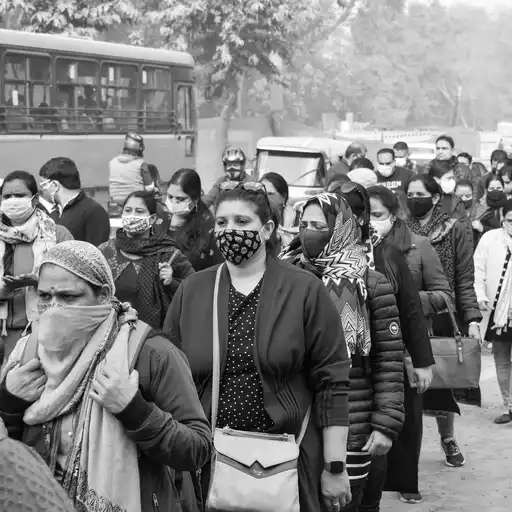The 2025 measles outbreak in the US escalates into a major public health crisis, with significant implications for immunization efforts and global viral threats.

The United States is currently grappling with a dramatic measles outbreak that has spiraled out of control, leading to hundreds of confirmed cases and several tragic deaths. This alarming public health crisis not only highlights the immediate challenges faced within the US but is also reflective of a broader resurgence of vaccine-preventable diseases globally.
Read Also – 👉👉Polio-Free South-East Asia: A 11-Year Milestone Worth Protecting👈👈
Measles Outbreak in the US: Scope and Severity
The Current State of Measles Infections
Since early 2025, the US has experienced a staggering increase in measles cases, with over 700 infections reported, primarily in Texas and neighboring states such as New Mexico, Oklahoma, and Kansas. As of March 20, 2025, cases have emerged across 17 states, signaling a widespread resurgence of the disease. Texas has been the epicenter of this outbreak, especially in the South Plains and Panhandle regions, where 259 cases were documented between late January and mid-March alone. Tragically, this outbreak has resulted in hospitalizations and fatalities—the first measles-related death in the country in a decade occurred this year, claiming the life of an unvaccinated child.
Impact on Vulnerable Populations
Most of the affected individuals are children who are either unvaccinated or have uncertain vaccination statuses, resulting in a hospitalization rate of approximately 17%. The epidemic has been fueled by concentrated clusters of cases, with three major groups accounting for 90% of infections. This concerning trend underscores the importance of immunization, as the outbreak primarily affects those with no vaccine protection.

Read Also – 👉👉Colorectal Cancer Awareness Initiatives: Major Healthcare Players Launch 5 Innovative Campaigns👈👈
Why the Outbreak is Out of Control
Factors Contributing to the Resurgence of Measles
- Decline in MMR (measles, mumps, rubella) vaccination rates due to hesitancy and misinformation.
- Communities with lower vaccination coverage enabling measles to spread rapidly.
- Loss of herd immunity that previously kept measles at bay.
- Contagious nature of the measles virus, which spreads easily through airborne droplets.

Read Also – 👉👉Managing Type 1 Diabetes in Children: 7 Essential Strategies for Empowered Families👈👈
Global Viral Threats: H5N1 Bird Flu and Europe’s Virus Surge
H5N1 Bird Flu in Liberia
As the US addresses its measles crisis, other regions are battling their own outbreaks. The H5N1 bird flu has become a significant concern in Liberia, with officials worried about its potential to transmit to humans and possibly spark a global pandemic. This adds another layer of urgency to the already pressing health issues facing the international community.
European Virus Surge
Europe is also seeing a rise in various deadly viruses. While details about the specific outbreaks are still emerging, the overall trend suggests a worrying pattern of infectious diseases that could stretch healthcare resources worldwide. This interconnectedness of health threats emphasizes the need for robust surveillance and global cooperation.

Read Also – 👉👉Unhealthy Breakfast Foods and Heart Health: 5 To Avoid for a Healthy Start👈👈
Impact and Public Health Response
Public Health Strategies in Response to the Measles Outbreak
- Vaccination campaigns targeting the unvaccinated population.
- Quarantine protocols to prevent further transmission.
- Public awareness initiatives about the importance of immunization.
Conclusion
The measles outbreak of 2025 is a wake-up call for public health officials and communities alike. With vaccination rates declining and misinformation spreading, the resurgence of this once-eliminated disease has devastating consequences, demonstrating how quickly complacency can lead to outbreaks. Urgent action is required to restore faith in vaccines, address healthcare access disparities, and implement effective disease surveillance globally to prevent further infection surges.
FAQs
What is measles and how does it spread?
Measles is a highly contagious viral disease that spreads through airborne droplets when an infected person coughs or sneezes. It can also spread through direct contact with infected surfaces.
Why is vaccination important for measles?
Vaccination is crucial as it helps establish herd immunity, protecting those who cannot be vaccinated due to medical reasons. High vaccination coverage prevents outbreaks.
What are the symptoms of measles?
Symptoms of measles typically include high fever, cough, runny nose, and a distinctive rash. Complications can include severe diarrhea, ear infections, and pneumonia.
How can communities respond to a measles outbreak?
Communities can respond by promoting vaccination, educating the public about the disease, implementing quarantine measures, and supporting healthcare access.
Related Videos
Read Also –
This article is intended for informational purposes only and should not be taken as medical advice. For health-related concerns, please consult a healthcare professional.
Read Also –
| https://www.cdc.gov/measles/data-research/index.html |
| https://www.dshs.texas.gov/news-alerts/measles-outbreak-2025 |
Hey! I hope you enjoyed reading this! If you did, could you do me a small favor and hit the like button? It would mean a lot to me and help me reach more people. Thank you so much! Got any thoughts on this post? Drop them in the comments below!
How many stars would you give for my effort?





